Search Results for Tag: science
Arctic plastic “garbage patches”
There are a lot of things you might want to discover on a research cruise in the Arctic. Chunks of plastic floating around are not amongst them. But that is just what biologist Melanie Bergmann and her colleagues from the Alfred-Wegener-Institute and the Belgian Laboratory for Polar Ecology repeatedly did find while they were cruising through the Fram Strait, between Greenland and Svalbard.
They have just published a study documenting that plastic garbage has even reached the far north of the planet. In the online portal of the magazine Polar Biology, they describe how they found plastic waste floating on the surface of the ocean.
Plastic pollution – a fact of life?
In 2012, Bergmann and her colleagues took the opportunity of joining a cruise on the German research ship Polarstern to the Fram Strait to measure the extent of plastic pollution there. They monitored the ocean surface from the boat and a helicopter. Over 5,600 kilometres they found 31 pieces of plastic rubbish. But that will only be the tip of the “garbage-berg”.
“Since we were counting from the bridge of the ship, which is 18 metres above the sea surface, or from the helicopter, we primarily found large pieces of flotsam”, Bergmann told journalists. “So our figures very probably under-estimate the actual amount of garbage”, she added.
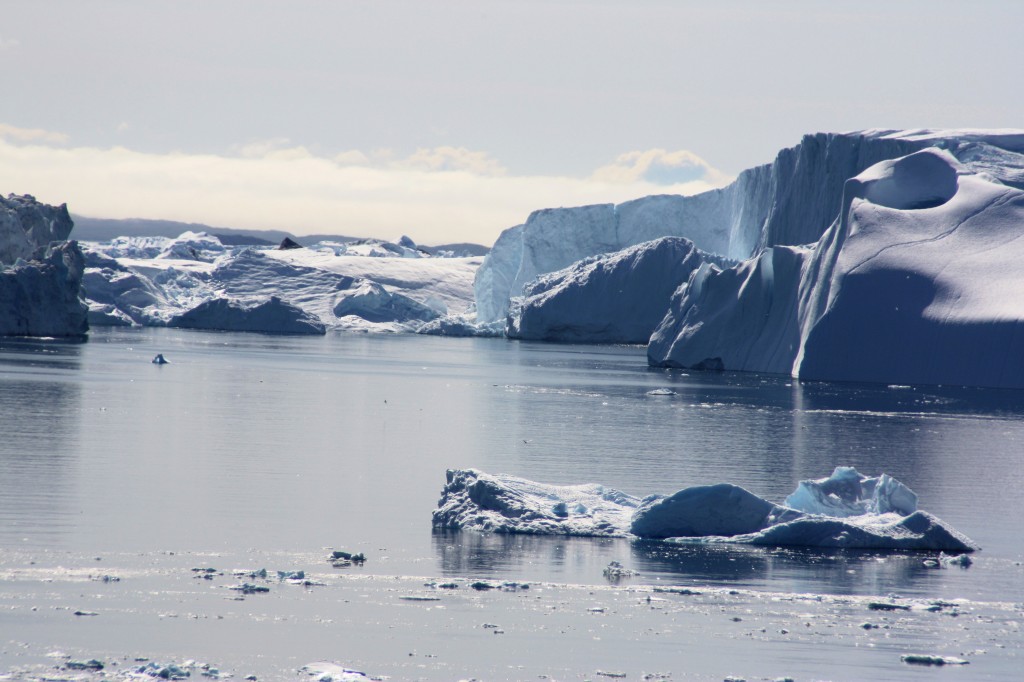
Too beautiful to “waste”? The team even found plastic waste in Greenland’s Ice Fjord (Pic: I. Quaile, Ilulissat)
Plastic waste tends to disintegrate into small pieces, just one or two centimeters in size, if they float in the sea for any length of time.
Somehow, the results of this study did not really surprise me. That, I think, is a very sad state of affairs. There have been so many reports of plastic particles being found in animals and birds and so in our human food chain that there is a danger we take this serious form of pollution for granted. The ngo Ocean Care estimates that around nine million tons of plastic waste finds its way into the oceans every year.
The seabed as a waste dump?
The AWI scientists say this is actually the first study to show that plastic waste is floating around on the surface of Arctic waters. For an earlier study, the German biologist searched for plastic, glass and other waste on photos taken of the Arctic seabed. She found that even in deep sea areas, the amount of garbage has increased in recent years. The concentration is 10 to 100 times higher than on the surface. The experts deduce from this that garbage ultimately sinks to the bottom and collects there.

Plastic bag at the HAUSGARTEN, the deepsea observatory of the Alfred Wegener Institute in the Fram Strait. This image was taken by the OFOS camera system in a depth of 2500 m. Photo: Alfred-Wegener-Institut/Melanie Bergmann/OFOS
The question is: how does this waste get up into the Arctic? It could, it seems be part of what, is described as a “garbage patch”, created when plastic waste gets caught up in ocean currents and concentrated into a kind of whirlpool.
Scientists have already identified five of these patches around the globe. The waste in the Arctic appears to be part of a new, sixth “patch” developing in the Barents Sea. What a depressing development! Scientist Melanie Bergman thinks it probably contains waste from the densely populated coastal regions of northern Europe.
“It is thinkable, that some of this garbage drifts north and northwest, as far as the Fram Strait”, she says. Another theory, she says, it that the garbage being found in the Arctic is caused by the retreat of sea ice.
“More and more fish trawlers are following cod further north. Presumably, rubbish from the ships ends up in Arctic waters, either deliberately or by accident. We are assuming that this trend will continue”, says Bergmann.
Climate change and pollution threat
So while here in Bonn, just across the road from my office, the UN climate secretariat is struggling to come up with a draft text for the Paris COP21 summit, which will be acceptable to all parties (and so subject to so many compromises and loopholes?), we have yet another sign of a climate change impact on the no-longer-pristine Arctic. And at the same time, it indicates the effects our unsustainable lifestyles are having on the environment of the planet. I have been witness to many arguments over whether governments should put more effort into combating climate change or environmental degradation and pollution. Ultimately, once more I come to the conclusion that it is virtually impossible to separate the two.
Last week I interviewed two experts on different aspects of ocean protection for a Living Planet special: Oceans under Pressure. They expressed similar views on the intrinsic connections between climate change, humans’ maltreatment of the environment and the health of the oceans on which we rely for survival. Not only are we causing climate change. The other pressures we put on the oceans make it less able to cope.
Tony Long is in charge of work against illegal fishing with Pew Charitable Trusts:
“I think climate change, over-fishing and illegal fishing are all linked in one way or another. The bad practices that occur from illegal fishing can damage the ecosystem, whether it be trawling and ripping up corals, or fishing the wrong species at the wrong time. It all has an effect on the broader ecosystem. And with ocean acidification and the changes that are taking place now scientifically proven, that’s going to reduce the amount of fish people can catch, if we don’t start to look after it. So actually it should all be seen as one”. (Read the interview here).
Ove Hoegh-Guldberg is Director of the Global Change Institute at the University of Queensland, Australian, and chief scientist with the XL Catlin Seaview Survey, which has been monitoring the state of the world’s coral reefs, including the current global bleaching event:
“On our current track where we’re polluting local water, we’re overfishing coral reefs and now we’re rapidly changing the temperature and acidity of the ocean, we won’t have coral reefs and it will be a very long time before they come back – probably well after our exit from the climate. We are the first generation to see these types of impact and we are going to be the last that has the chance to do something. We must get to very low CO2 emission rates as soon as possible, hopefully over the next 20 to 30 years. Because if we don’t – it won’t just be coral reefs. It will be a large number of other ecosystems that go, and humanity will be in trouble.” (Read the interview here.)
I rest my case.
Ice melt to motivate whizzkids?
And understanding that ice cores can tell us about 800,000 years of climate history tends to fascinate even the most unscientific of youngsters.
Not that the 160 young folk assembled recently in Bonn by the Hans-Riegel Foundation were lacking in scientific interest or talent.
The foundation, set up by the highly successful businessman who created HARIBO, (comes from HAnsRIegelBOnn, by the way) the “gummy bear” brand name, supports innovative educational projects with a view to encouraging talented young people to go into research. It awards prizes to school pupils in Germany and Austria for scientific projects.
Recently, 160 prizewinners were invited to a “Science Slam” in Bonn and a series of workshops and presentations – including a talk by renowned climate expert Mojib Latif. Mojib Latif is a professor for oceanology and climate dynamics at GEOMAR, the Helmholtz Centre for Ocean Research in Kiel, in northern Germany.
He has just been chosen as one of two winners of this year’s Deutscher Umweltpreis or German Environment Prize by the “Deutsche Bundesstiftung Umwelt”, one of Europe’s largest foundations. It’s the first time the award has been given to a climate scientist.
Latif, whose family background is Indian, is a well-known face on television. He has a talent for explaining complex climate phenomena in a way that ordinary people with no scientific background can grasp. As I listened to him addressing the young scientists, I could see how they were spellbound by his stories and anecdotes. And that makes it easier to digest the diagrams and figures that illustrate the workings of the global climate.
Latif holds his audience’s attention with a mixture of humour and examples from everyday life. He anticipates questions of the “skeptical” type, explaining the existence of natural trends and variations as well as human-made warming, and the wide range of scenarious covered by climate models.
When he turned to Greenland and to the Antarctic, I could see the fascination and curiosity in the eyes of the young audience.
The main message of this expert’s message was a mixture of concern at the rate of climate change and optimism that we have the technology to replace fossil fuels by renewables – and that the up-and-coming generation will use it to avert the worst.
Although he’s fairly certain we won’t be able to keep to the two-degree target, Latif says humankind just cannot be “so stupid” as to keep burning fossil fuels and heating up the atmosphere. If the applause of those representatives of the younger generation could be translated into positive action to combat climate change, his optimism may well be justified.
You can read what he told me in an interview after the encounter with Germany’s science whizzkids here:
Ice paradoxes from pole to pole
Returning after a longish break with little access to news and data, there are several ice and snow stories jumping out of my mailbox at me. I’ve picked out two which those of a skeptical persuasion might say disprove some key climate assumptions, but which actually, in fact, confirm some trends and predictions.
Worrying, but not unexpected, are the latest measurements of the extent of the Arctic sea ice. In February, the experts at the National Snow and Ice Data Center (NSIDC) based in Boulder, Colorado, noted a record for the lowest observed maximum sea ice extent. Although it seems the sea ice did grow at some points during March, the overall for the month was the lowest recorded since satellite measurements began in 1979. The average extent for the month was 14.39 million square km – some 1.13 million square km below the 1981-2010 long-term average. The previous March low of 14.45 million square km was recorded in 2006.
In the Arctic Journal, Kevin McGwin quotes Andy Mahoney, a geophycisist with the Sea Ice Group at the University of Alaska Fairbanks, as saying the irregular pattern, with a kind of “double dip”, with the ice decreasing, increasing, then decreasing again, is “a pretty unusual event, regardless of the reason”. Normally, the ice levels would increase to the seasonal maximum first in March, then decline.
One reason, Mahoney says, could be the wind blowing ice into the regions where ice growth was observed, according to the NDSIC the Bering Sea, Davis Strait and around Labrador.
No contradiction to climate warming theory
The NSDIC says warm conditions in the Bering Sea and the Russian Sea of Okhotsk contributed to the record low winter ice maximum.
The overall downward trajectory, however, is clear. The brief increase in March is not a sign that the sea ice is recovering. Mahoney told the Arctic Journal parts of Alaska had seen abnormally high temperatures this winter, which was in line with the overall seasonal ice observations.
“What drives the maximum extent is what happens at the margins, and they can grow and retreat due to short-term variants. The conditions in the central Arctic, far from the action, are indicative of the warm year we’ve had in Alaska,” he said. Barrow, on Alaska’s northern coast, far away from the southern margin, for example, saw a lot of broken ice this winter, according to Maloney.
WWF expressed concerned about the latest figures:
“This is not a record to be proud of. Low sea ice can create a series of reactions that further threaten the Arctic and the rest of the globe,” said Alexander Shestakov, Director, WWF Global Arctic Programme.
“This chilling news from the Arctic should be a wakeup call for all of us,” said Samantha Smith, the leader of WWF’s Global Climate and Energy Initiative. She stresses the need to cut global emissions to halt the Arctic melt.
The proportion of thick Arctic ice that lasts multiple years has dwindled over the past two decades. A recent study shows that Arctic sea ice has thinned by 65 per cent since 1975, leaving ice that is more susceptible to melting.
Writing for Alaska Dispatch News (AND), Yereth Rosen notes that the most dramatic changes in the Arctic sea ice extent have been in the melt season, not in the period of maximum winter coverage. He quotes NSIDC scientist Julienne Strove, who led a study published last year in Geophysical Research Letters which showed the open-water season is lengthening, mostly because of extended melt in summer and autumn. So is this additional winter record a sign of more melting to come? Only time will tell, but the signs are not looking good.
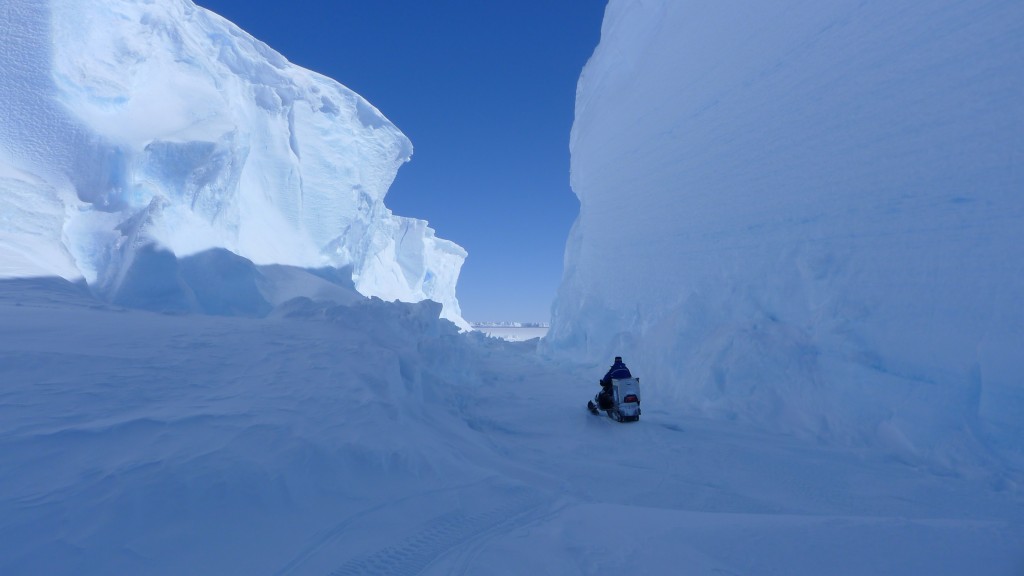
Warmer temperatures, more snow? Belgian International Polar Foundation shot of director and explorer Alain Hubert in the Antarctic.
A story from the opposite pole has also attracted attention. It says climate change is actually increasing the amount of snow in the Antarctic. Puzzling? Not necessarily.
More heat, more snow?
An international study headed by Germany’s Potsdam Institute for Climate Impact research (PIK) comes to the conclusion that every degree of regional warming could increase snowfall there by around five percent. The estimate is based on ice cores and climate modeling.
The information adds a new element to calculations of how much the Antarctic will contribute to global sea level rise. Some people might assume more snow would stop the Antarctic from losing mass. In fact the increasing weight of new snow and ice can make it slide towards the coast and into the ocean faster. In this connection, you might like to read some more stories on these Antarctic issues:
Thicker-ice-in-the-antarctic-good-news-for-the-climate?
Antarctic melt could raise sea levels faster
West Antarctic ice sheet collapse unstoppable
Anders Levermann, one of the new study authors, whom I have spoken to several times on the effects of climate change on the Antarctic and global sea levels, says the latest results back up earlier conclusions that the Antarctic will lose more ice than it will gain and thus have a major influence on global sea level. Levermann, from PIK, is also one of the lead authors of the sea-level chapter of the IPCC report. He stresses that the latest study just provides yet another piece of the “jigsaw puzzle” coming together on how global sea level is likely to develop in the future.
If the world leaders called on to come up with a new world climate agreement at the end of this year need any more motivation, this scientific research from both ends of the world should really give them an extra push.
Arctic Winter Impressions
Your Iceblogger is off on a hard-earned break for the next few weeks. I’d like to leave you with some photographic impressions of my winter trip to the Arctic. Thanks again to Norway’s Arctic University in Tromso and the organisers of Arctic Frontiers for the opportunity to visit Svalbard and Tromso at this fascinating time of year. Look out for the next post in April, when spring should be well underway.
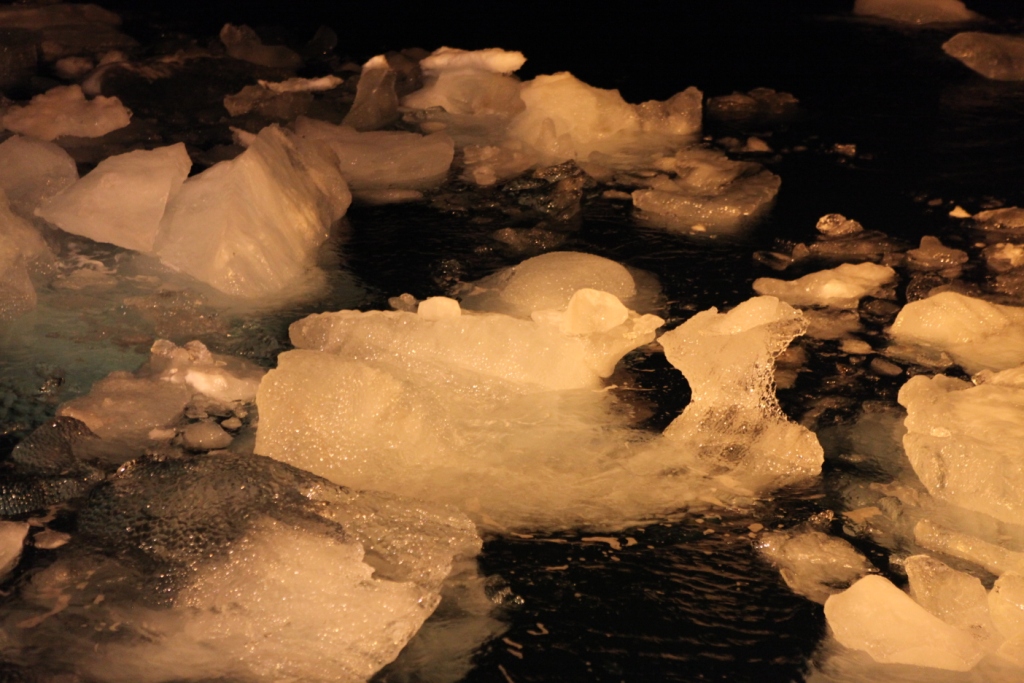
Ice floats in Kongsfjorden, Svalbard

Svalbard twilight
- Icicles on the nets aboard the Helmer Hanssen
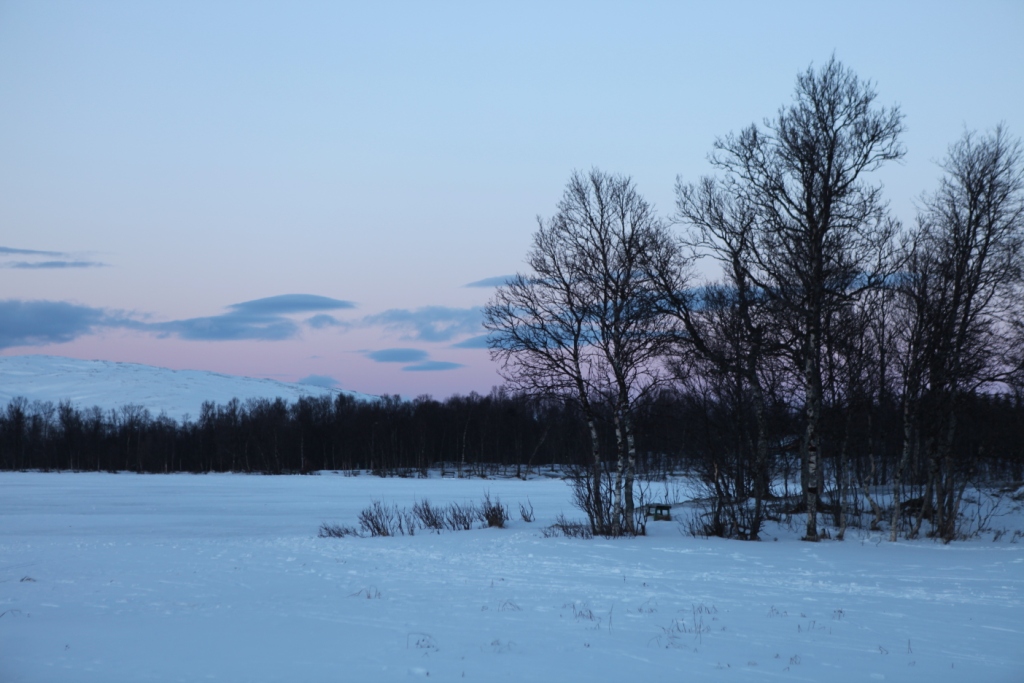
Winter light outside Tromso
Climate worry grows at Arctic Frontiers
I have followed the past two days, the political section of the Arctic Frontiers conference, with great interest, with the thought of the Paris climate conference in November always at the back of my mind.
Clearly, in a country rich from the sale of oil, cutting climate-killing emissions is a tricky issue. The oil sector was strongly represented here, but so too were those who see the need for a transition away from fossil fuels in the interests of the global climate.
With climate change opening the Arctic to development and the search for the oil, gas and minerals thought to be locked beneath the icy region, this year’s Arctic Frontiers meeting has attracted record participation. The impact of low oil prices on development prospects, and political tensions between Russia and western Arctic states have heightened interest in listening to what experts and decision-makers have to say on the relation between climate and energy.
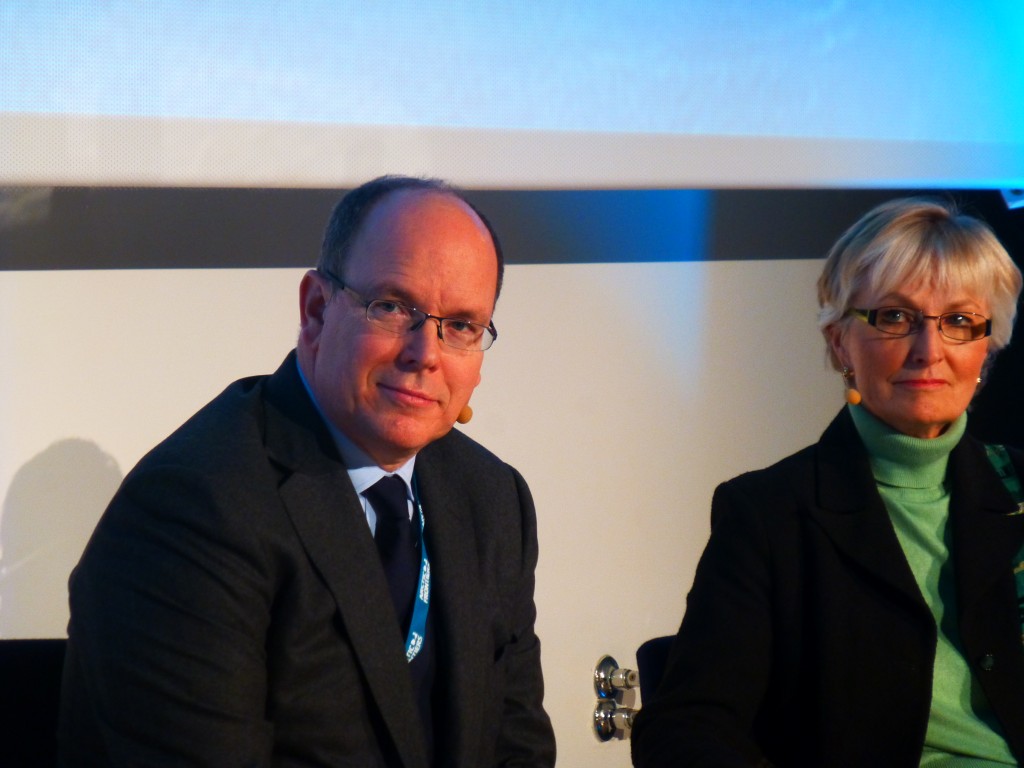
Arctic fan Prince Albert of Monaco and US special rep Fran Ulmer debated the feasibility of Arctic oil
With prime ministers from Norway and Finland and other ministers from Sweden and Denmark, as well as the US special Representative for the Arctic and the Russian President’s special representative for international polar cooperation addressing the meeting, media interest is high in this Arctic city, two hours flight north of the Norwegian capital, Oslo. (Looking at my flight schedule, I see Oslo is actually closer to Frankfurt than to the Arctic north of the country).
Do we need Arctic oil in a warming world?
The Norwegian premier Erna Solberg was here for the presentation of a report on sustainable growth in the north, a joint venture by Norway, Sweden and Finland. Gas is one of the four drivers named in the report. She left no doubt about her country’s continuing interest in oil and gas exploitation in the Arctic region. She told me in a brief interview she sees no contradiction between this and attempts to reach a new world climate agreement in Paris at the end of the year:
“’We have an oil and gas strategy. There are many not yet found areas where we think there is more gas. We think gas is an important part of a future energy mix, and I think we have to explore to find it.”
The same day, the Norwegian government allocated new licenses for exploration in the north-western Barents sea area of the Arctic. Many of the blocks released for petroleum licensing are close to the sea ice zone that had previously been protected. The zones have now been redefined. Conservation groups are upset. WWF Norway says the announcement is risky, as there is still a lack of knowledge about species and ecosystems in this area.
Will low oil price halt Arctic energy development?
With oil prices at a record low, environmentalists hope Arctic development will slow down or even be put “on ice” permanently. Representatives of WWF told the delegates in Tromso – including high-ranking representatives of major oil companies Statoil and Rosneft – the world does not need oil from the Arctic. And gas should be only a “transition fuel”. Samantha Smith, leader of the ngo’s Global Climate and Energy Initiative, quoted the recent study indicating that 50% of the world’s remaining gas and 30% of the oil must stay in the ground if the two degrees centigrade target for maximum global temperature rise agreed by the international community is to have any chance of being adhered to. She presented an alternative vision of “a thriving green economy in the white north”, with renewable energies replacing the search for oil and gas.
Business rethinking fossil investment?
As I wrote here on the Ice Blog after the Sunday evening opening, it is not only the environment lobby that is advocating a switch to renewable enerergy. Jens Ulltveit-Moe, the CEO of Umoe, one of the largest, privately owned companies in Norway, active amongst other things in shipping and energy, said with the current low oil price, Arctic oil was simply not viable, and this would remain the case for many years to come. And by then, he said, the EU’s climate targets and the international support for a two-degree target would make fossil fuels a non-option.
But Sjell Giæver, Director of Petroarctic and Tim Dodson, Norwegian Statoil’s Head of Global Exploration, insisted short-term price drops alone would not halt Arctic exploration. The region was the last place to discover large new reservoirs to satisfy continuing high demand for oil and gas for an increasing world population.
Oil ventures in the Arctic have not been particularly successful in recent years. Statoil’s Dobson admits the biggest ever exploration drilling programme in the Barents Sea last year had a disappointing outcome. Statoil and others have also withdrawn from the hunt for oil off the coast of Greenland.
Russia hungry for Arctic energy
But the Russian President’s Special Representative for International Cooperation in the Arctic, Arthur Chilingarov, who is also a Member of the Board of Directors at the Russian oil giant Rosneft, stressed the company had completed construction of the northernmost well in the world last September. He said a new oil and gas field has been discovered and the program of Rosneft for 2015 to 2019 provided for a large volume of prospecting and drilling in the western part of the Arctic.
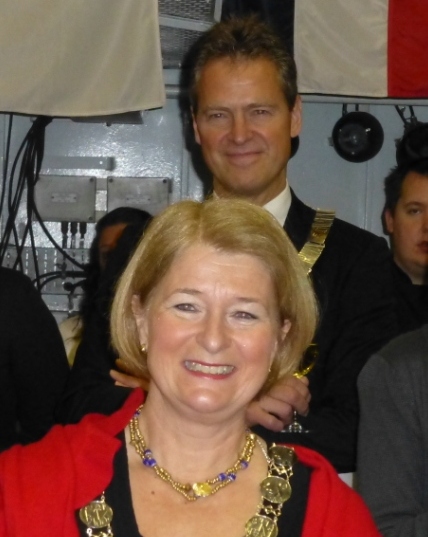
The rector of Tromso UiT Arctic University of Norway Anne Husbeckk and the mayor of Tromso Jens Johan Hyort have reason to be happy with the attendance at this year’s Arctic Frontiers event.
One factor however that is slowing Russian activity the Arctic is the implementation of sanctions by European countries and the USA on account of the tensions over Ukraine. Russia has turned to China and other countries for help, but the lack of western technology is an obstacle to further development in a region where bad weather, ice, remoteness and complete darkness in the winter months make oil and gas development a risky business.
There is a clear tendency amongst those involved in Arctic cooperation to play down the sanctions and keep political tensions out of the region. Norwegian President Solberg told me: “We have a good relationship in the Arctic Council with Russia. We have said we will be in line with Europe on sanctions, although Norway is one of the countries hit most by the counter-sanctions from Russia, for instance the fact that oil and gas exploration are among the sanction areas.”
But in the meantime, on a day-to-day basis, cooperation continues, for instance in the joint management of fish resources, said Solberg.
Business as usual?
While the debate continued in the political section of Arctic Frontiers, a new, business strand of the conference opened in parallel. It focuses – on oil, gas and minerals. Olav Orheim from GRID Arendal, a centre that works with UNEP, stressed that a lot of people here are in favour of Arctic oil and gas exploration, in the interests of jobs and economic benefits.Yet after the publication of last year’s IPCC report and with climate change high on the international agenda, there seems to be a wider acceptance here in Tromso of the disconnect between burning fossil fuels and the ever more urgent need to reduce greenhouse gas emissions.
Gunnar Sand is Vice President of SINTEF, the Norwegian “Foundation for Scientific and Industrial Research”, which has close ties to the oil business. From a moral point of view, “we all want to stay below the two degree limit”, says Sand. But it is not possible to change a society and an infrastructure based on fossil fuels overnight.
Technical progress too slow to stop warming
Technology for renewable energy is still not developing fast enough, says Sand. Emission reduction scenarios also rely heavily on carbon capture and storage (CCS), which would reduce emissions from fossil fuel burning and bridge the transition to a low-carbon economy. But the technology, which he himself has been involved in, is moving too slowly. I first met him during a visit to Svalbard, when he told me about a carbon capture and storage project, designed to capture emissions from Longyearbjen’s power station underground. He confirmed in Tromso that it has never been put into action.
Global warming, Sand says, is the most serious challenge of our time. This has to be reflected in political priorities. Governments have to create economic incentives to speed up change.
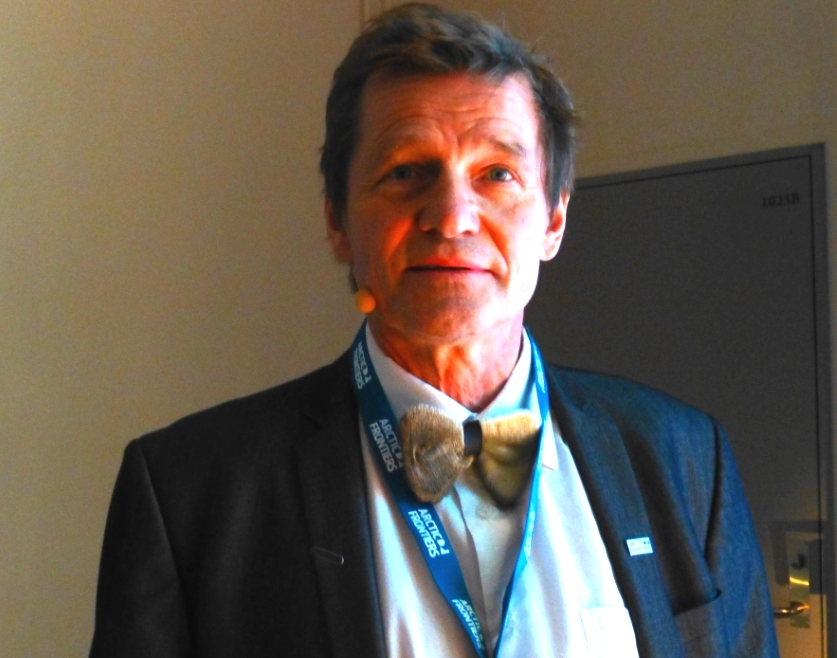
Salve Dahle, Chairman of the conference steering committee and master of ceremonies sporting a sealskin bow tie.
US special representative ex-Admiral Robert Papp indicated dealing with climate change would be one of the key policy drivers when the USA takes over the Chair of the Arctic Council, the international body that coordinates Arctic affairs, in April.
The Chair of the US Arctic Research Commission Fran Ulmer says a carbon tax would be the best way forward, to encourage industry and consumers to save energy and cut emissions. But she acknowledged the reluctance of governments to impose decisions that could upset their voters at the next election. That is the reality we face as countries weigh up their pledges for the November climate conference in Paris.



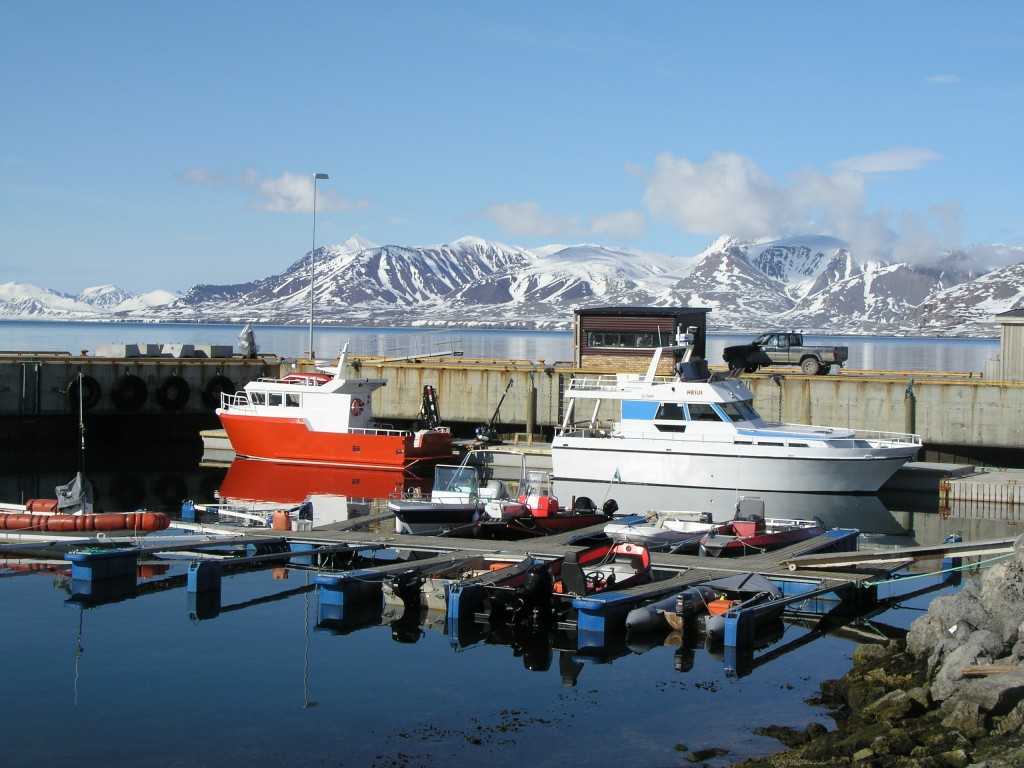

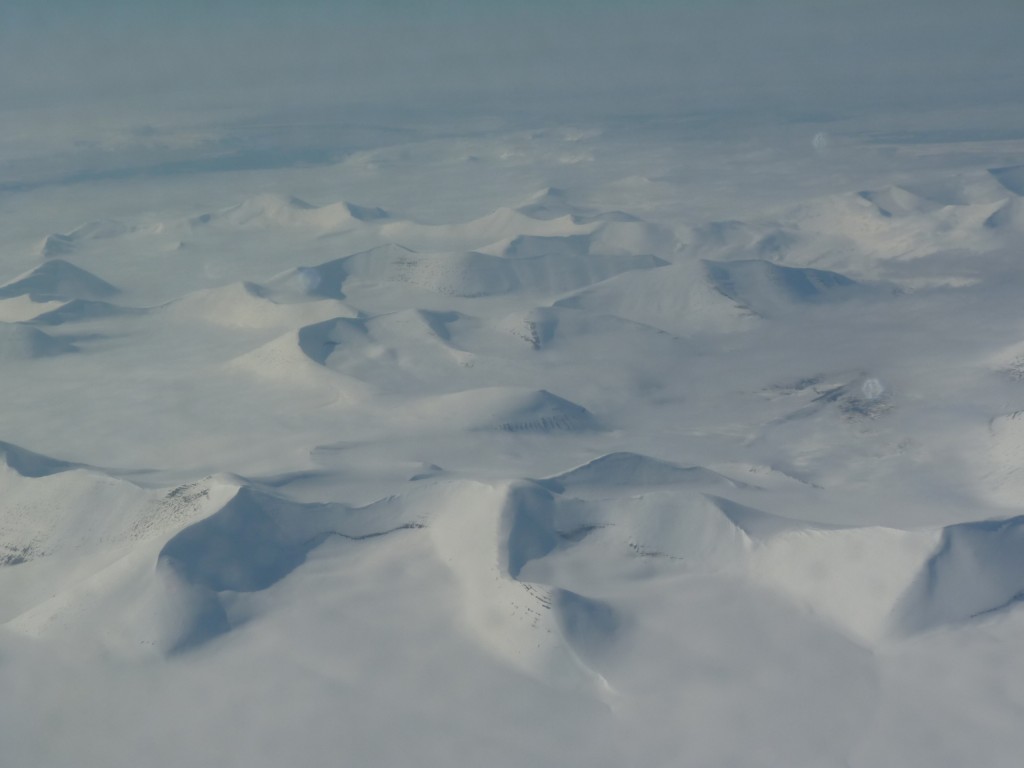
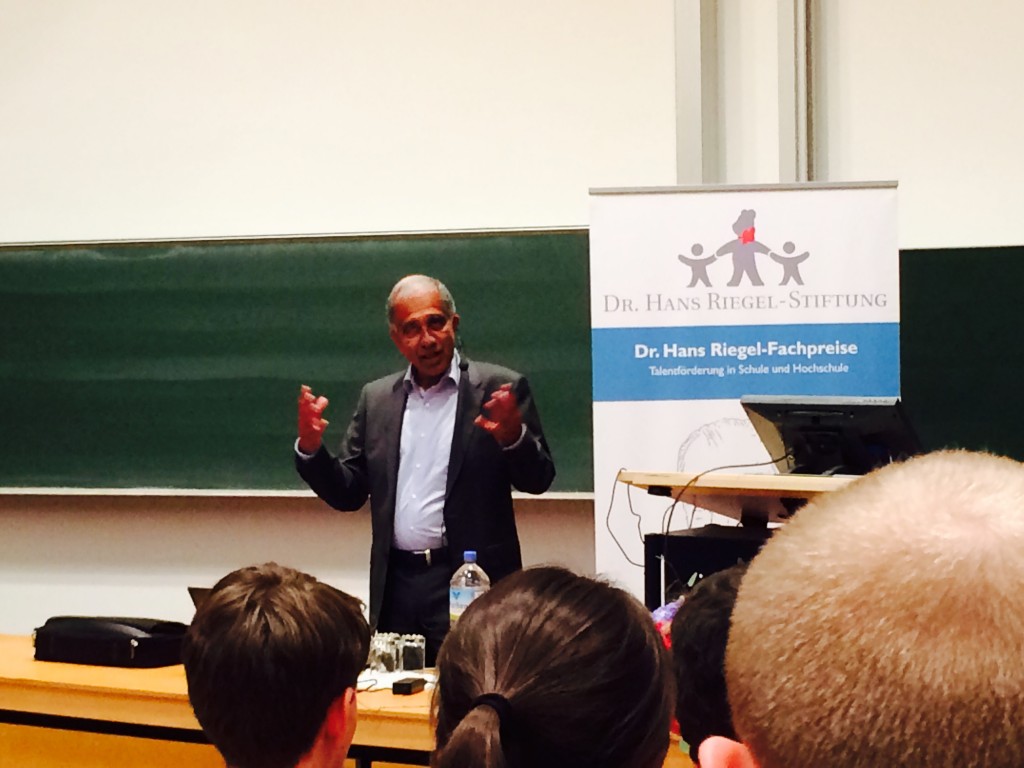
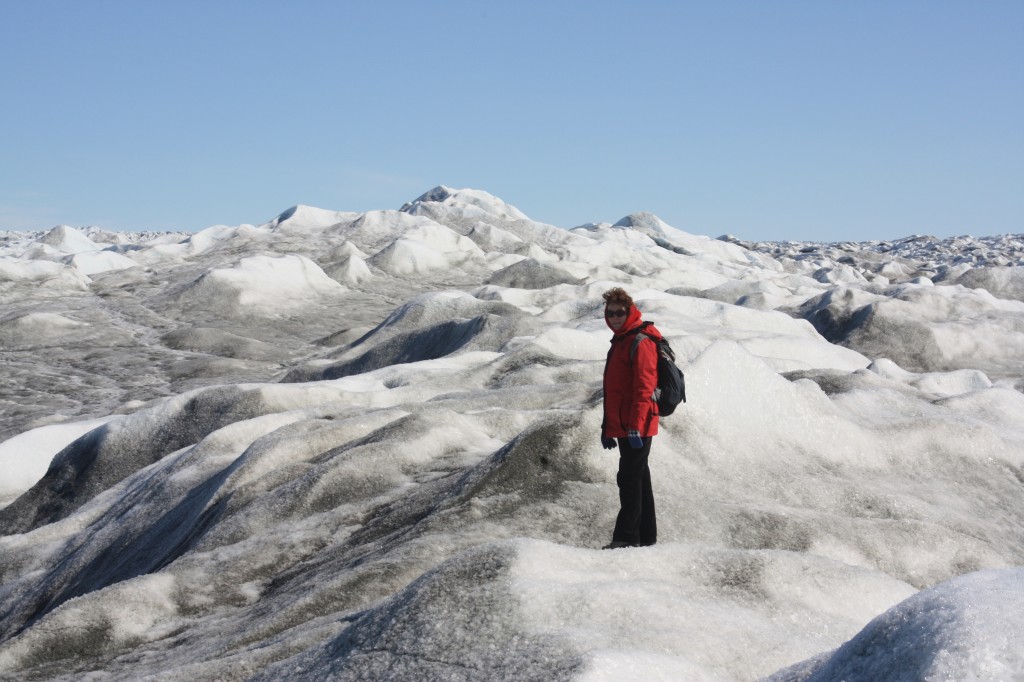

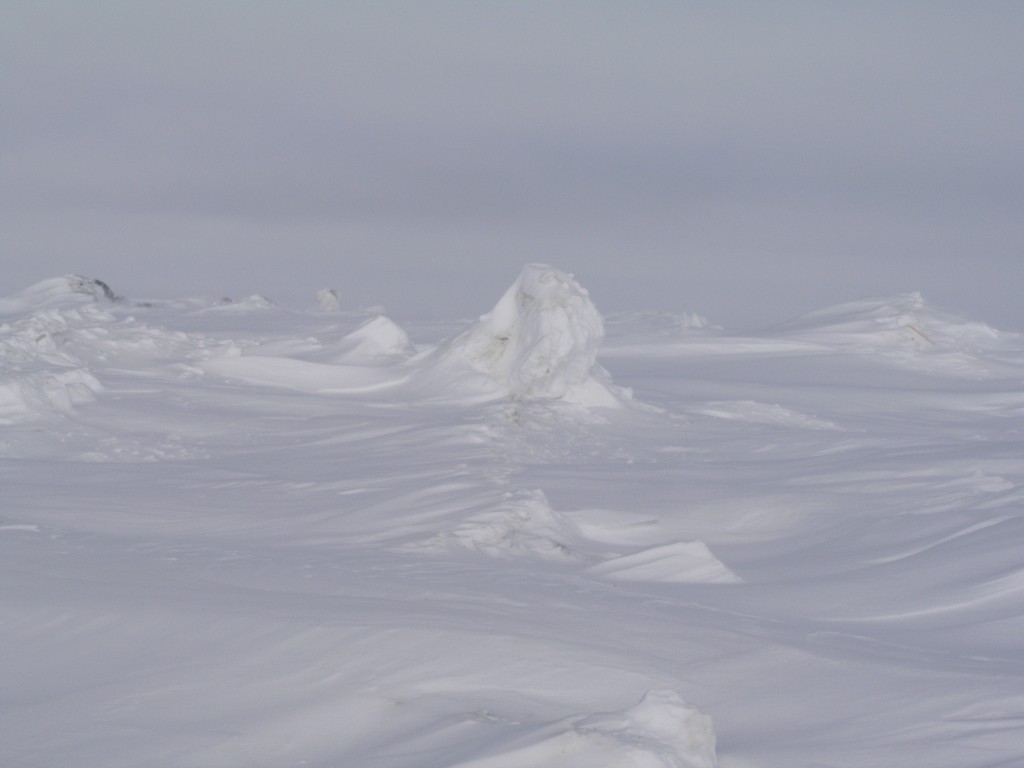
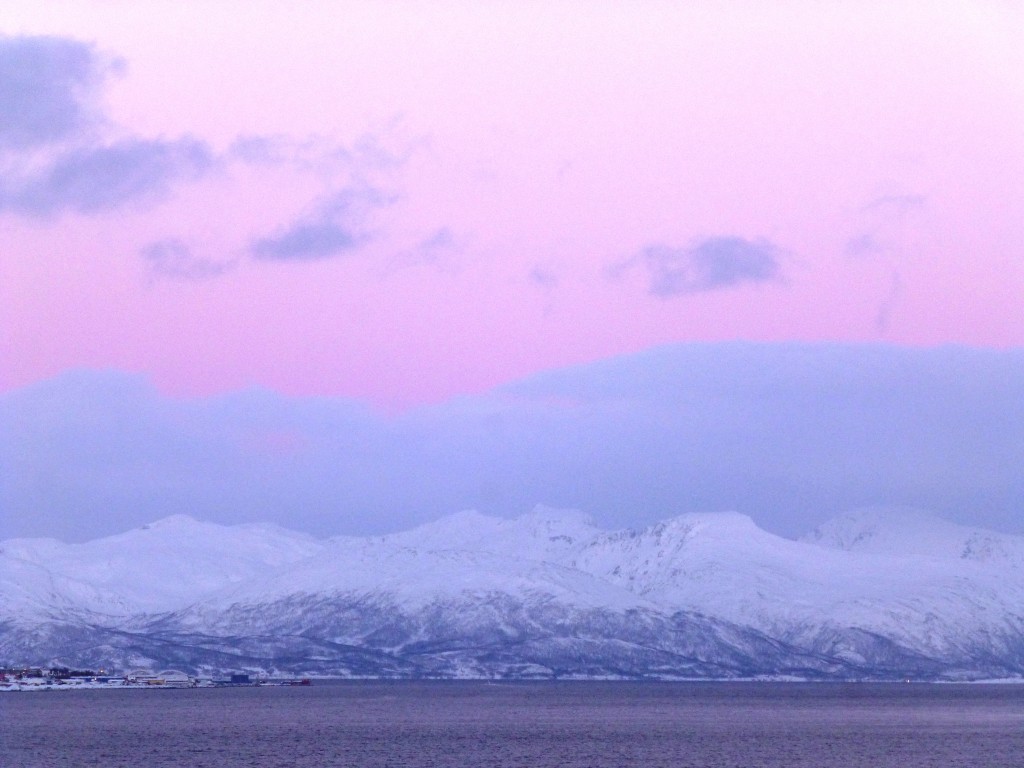
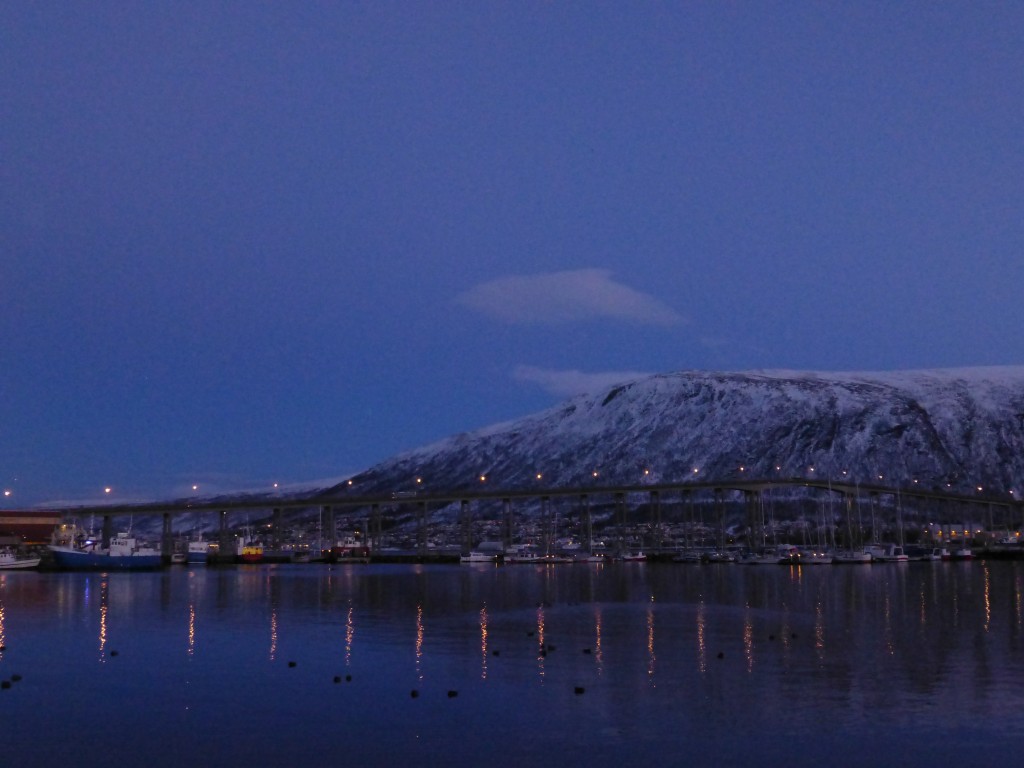

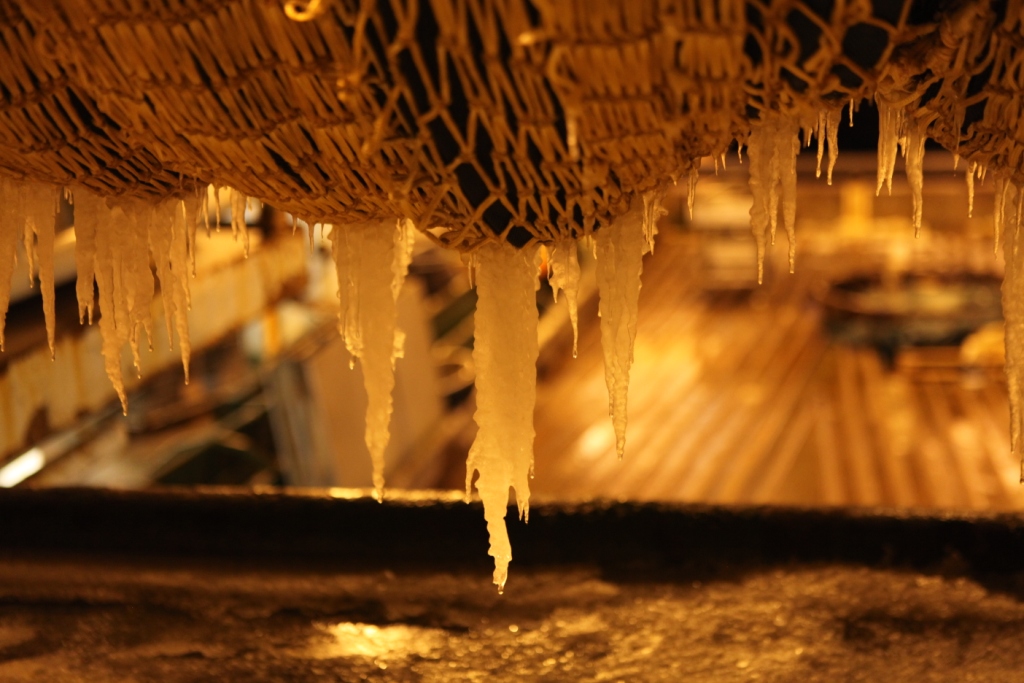
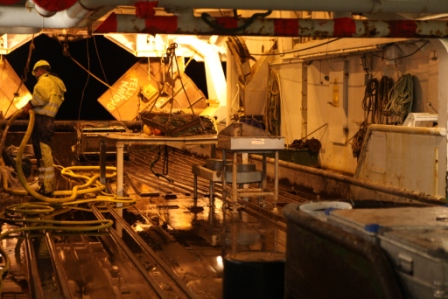

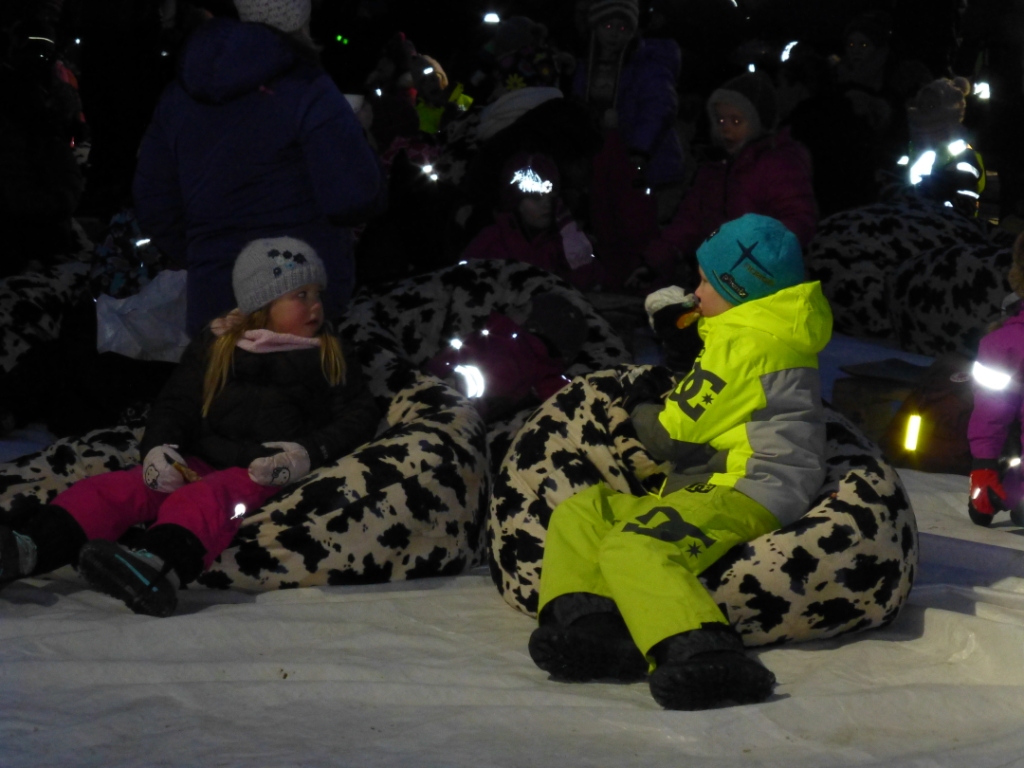
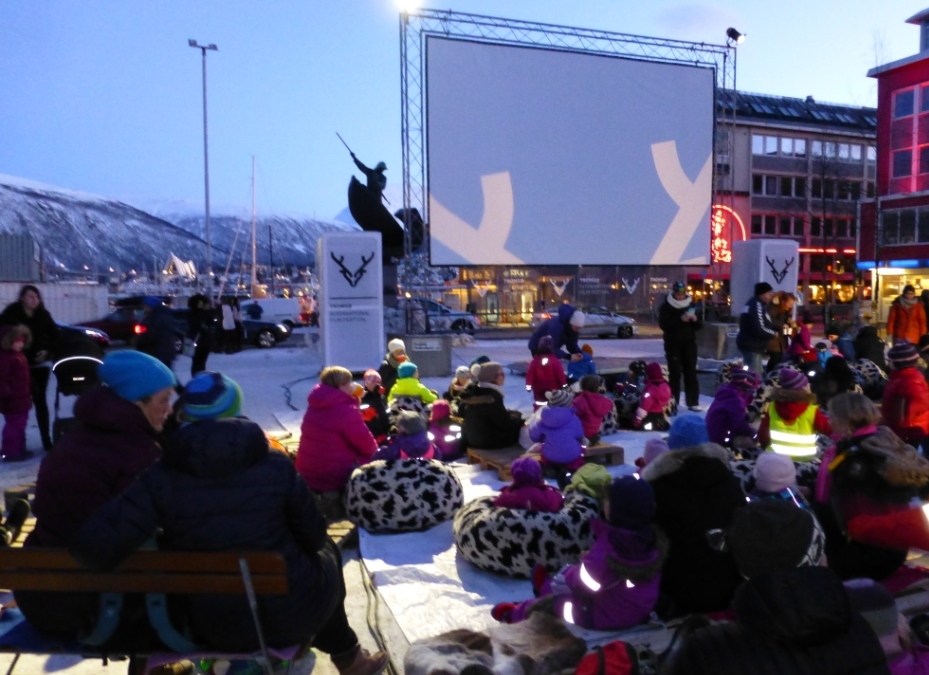
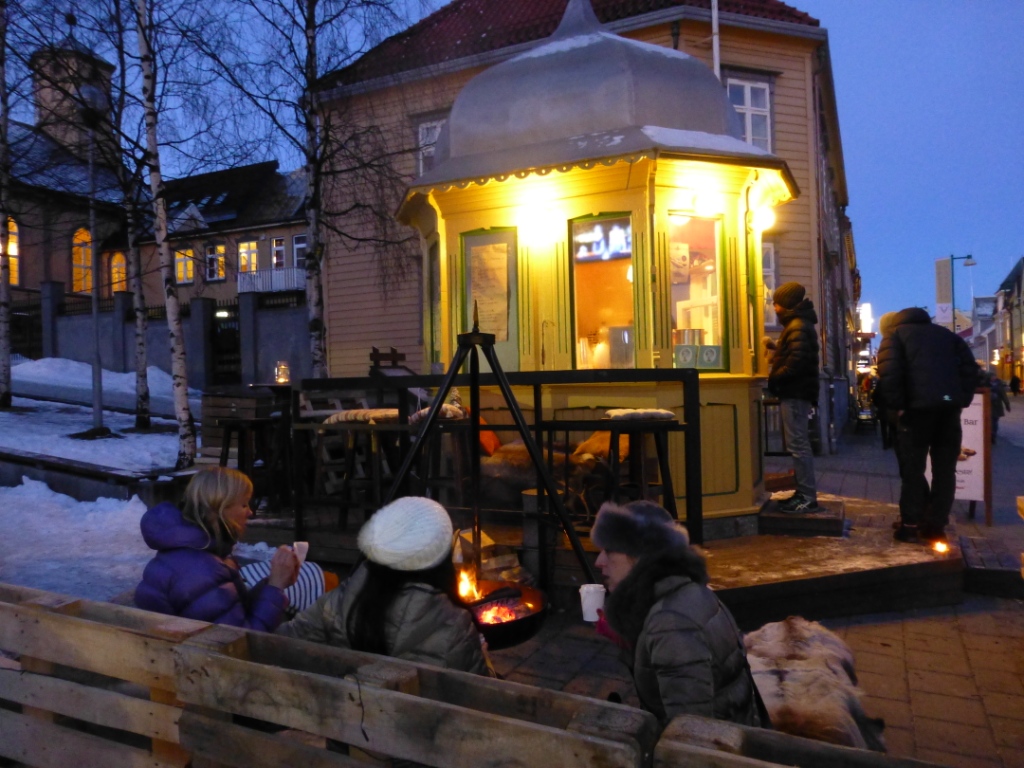
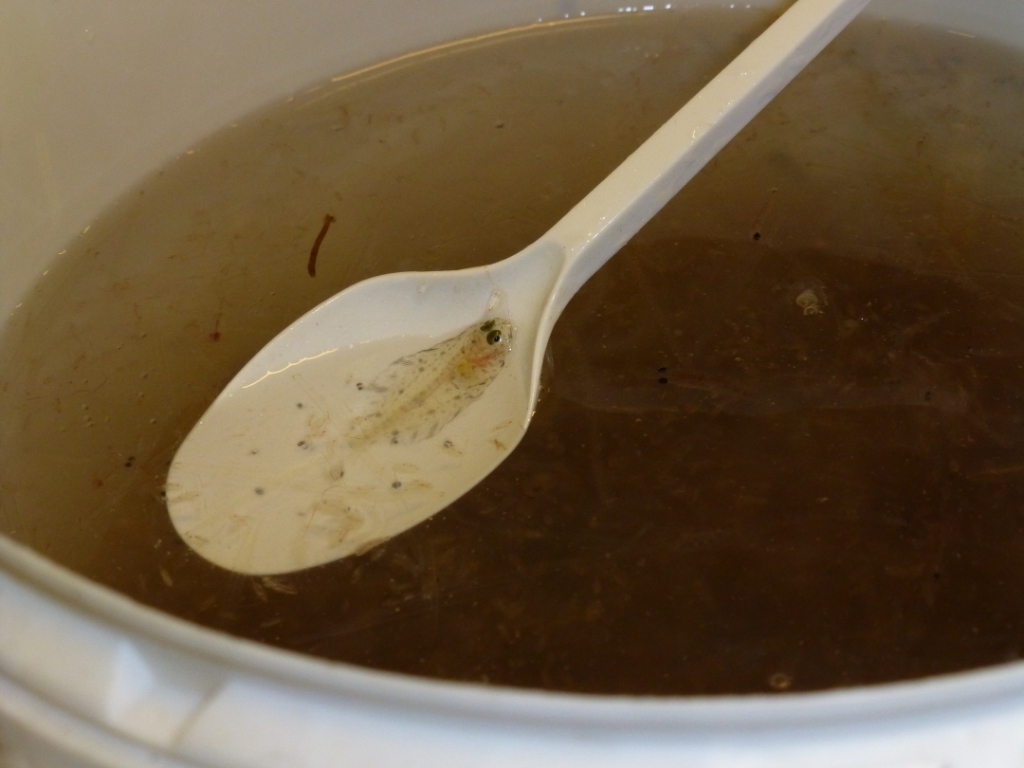
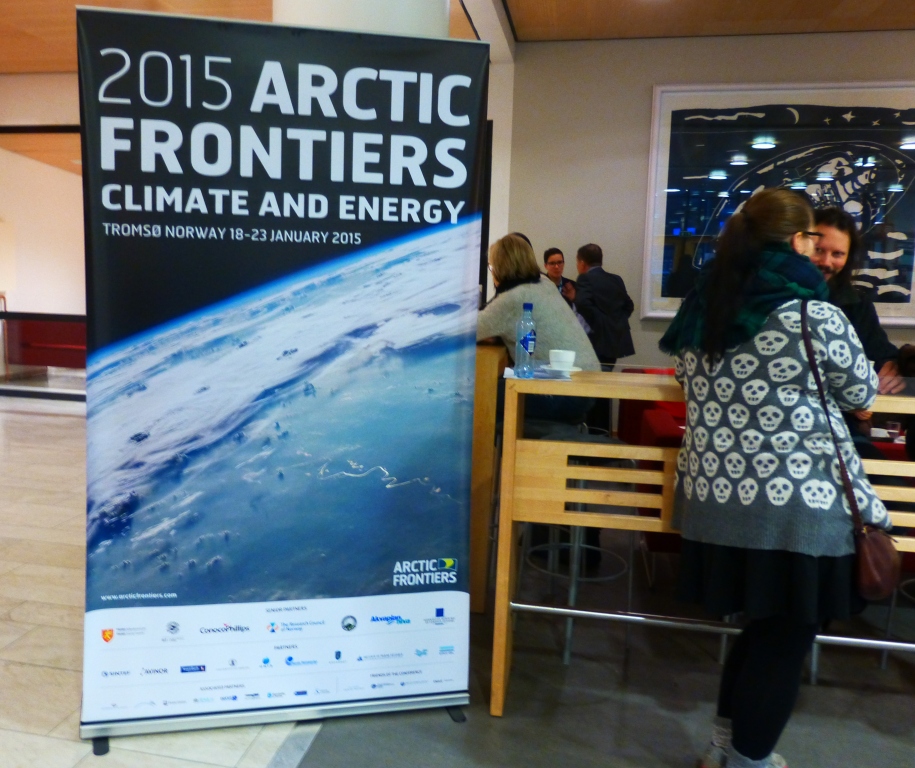
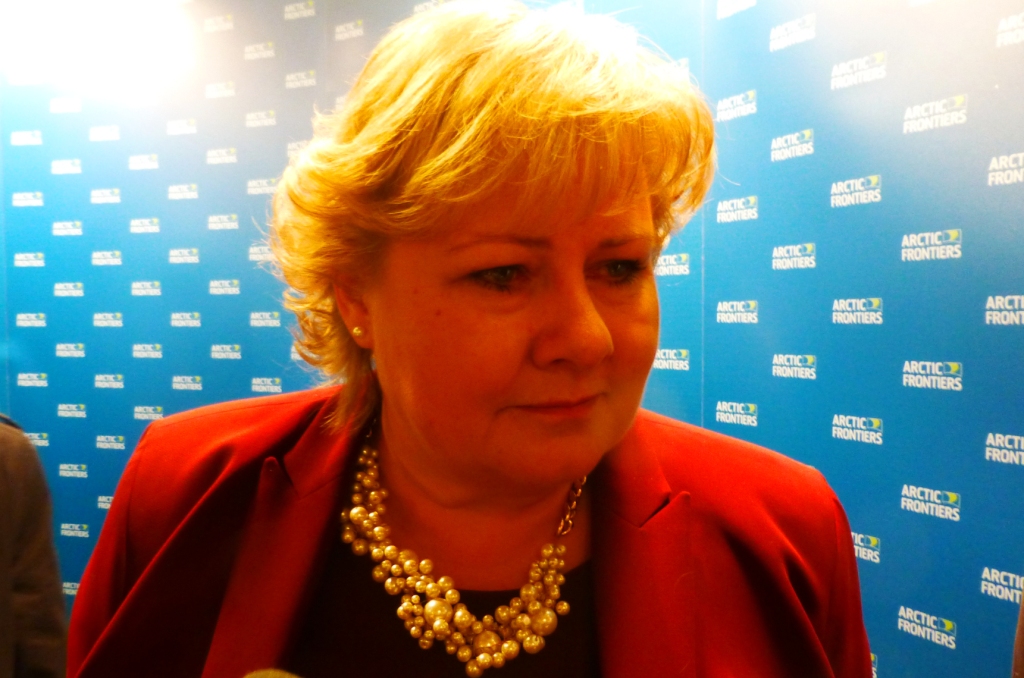

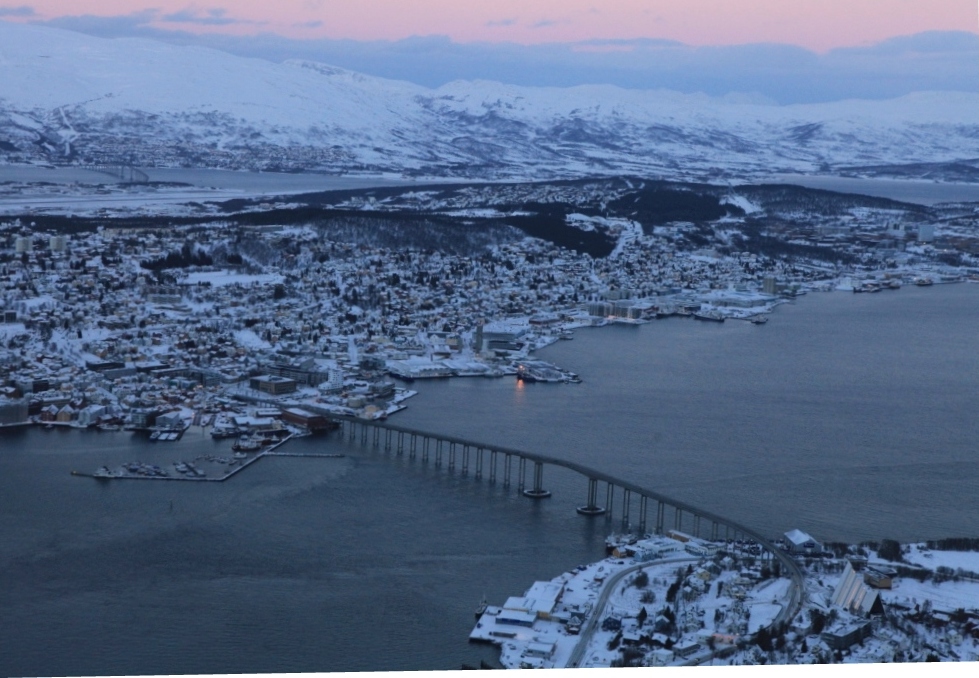
















Feedback